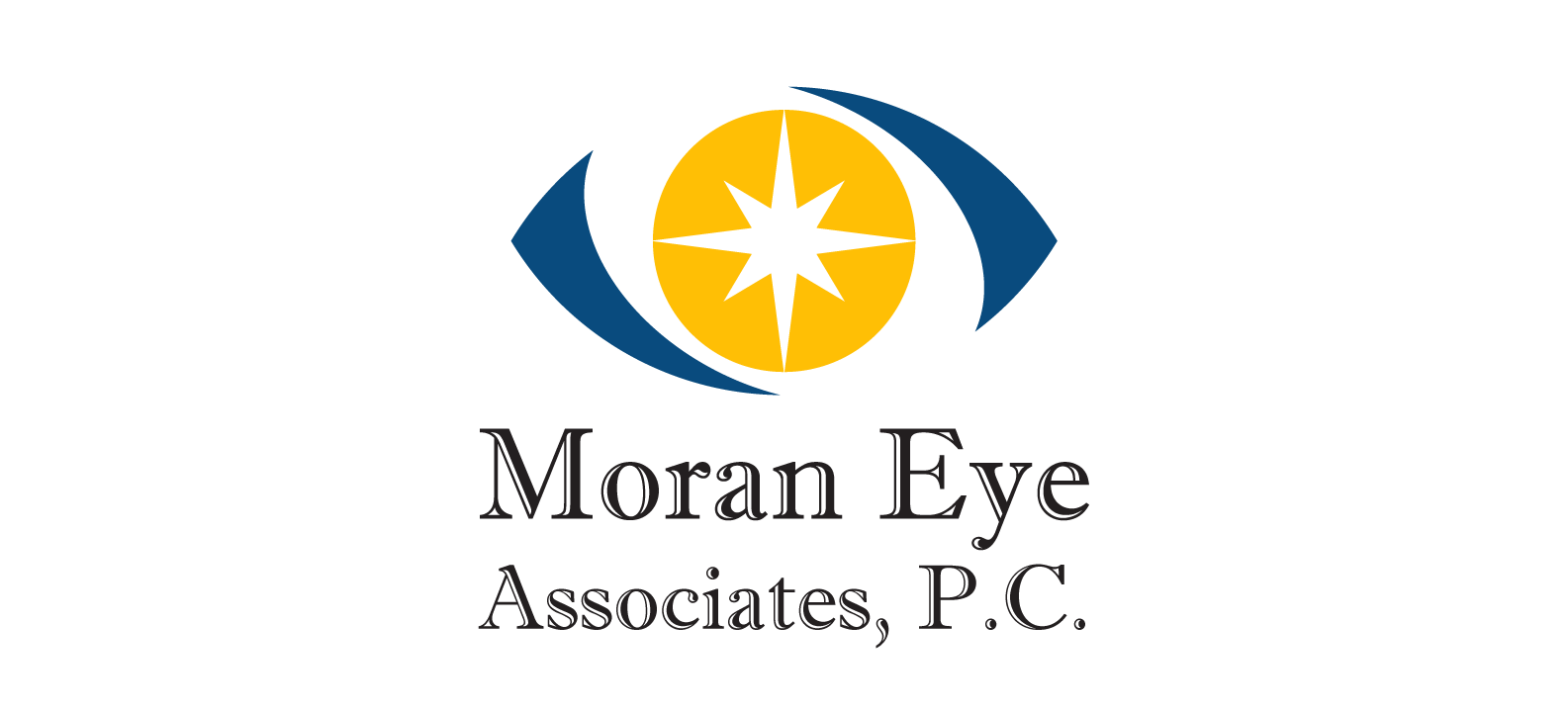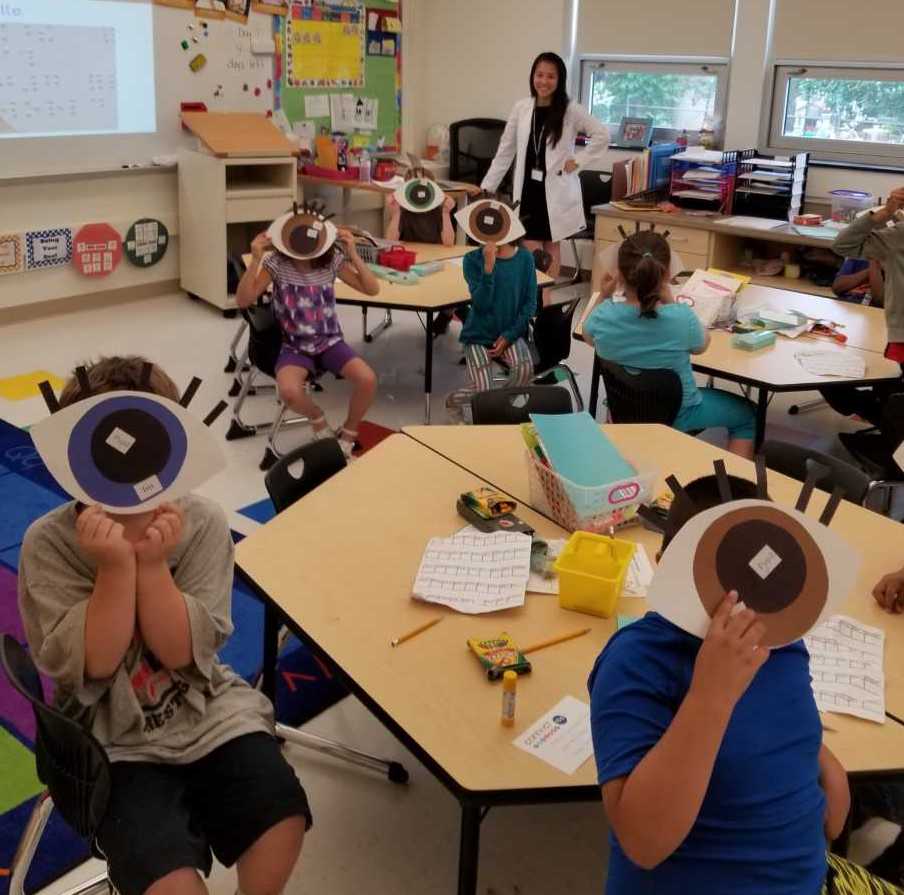by Dr. M | Dec 30, 2019 | Cornea, Eye Safety, LASIK, Patient Care, Surgery, Vision
How the laser works to improve your vision during LASIK surgery.
LASIK vision correction uses a laser to reshape your cornea to help you see better. To apply the laser treatment, Dr. Moran uses an excimer laser which emits a cool beam of ultraviolet light to precisely remove corneal tissue. The reshaped cornea allows for light rays to focus properly on the retina to give you clearer vision.
 Think of the cornea as a closed book with 500 pages. We create the flap about 100 pages into the book. Once the flap is opened, we apply the laser treatment to correct your vision in the last 400 pages of the book.
Think of the cornea as a closed book with 500 pages. We create the flap about 100 pages into the book. Once the flap is opened, we apply the laser treatment to correct your vision in the last 400 pages of the book.
After your flap is lifted, the excimer laser applies pulses of ultraviolet across the cornea in a custom pattern designed for your eyes. These precise light rays are able to remove as little as 0.25 microns of tissue at a time. How small is a micron? One micron is a thousandth of a millimeter.
How the cornea changeS DUring LASIK
The laser treats your cornea to give you better vision. Your cornea may be too long, too flat, or irregularly shapedsisipisi.ccsisipisi.ccsisipisi.ccsisipisi.ccsisipisi.cc.
- If you are nearsighted, the laser will make the cornea more flat;
- if you are farsighted, the laser will make the center of the cornea steeper.
- If you have an astigmatism, the laser will smooth your corneal tissue into a more symmetrical shape.
- If you have a combination of issues, the laser can treat nearsightedness with astigmatism, as well as farsightedness with astigmatism.
How the treatment is determined
In order to create your treatment plan, Dr. Moran does careful calculations using the data from your pre-operative testing. He takes into account your age and your visual needs. Then, the laser is programmed with your unique measurements. Once programmed, the laser is controlled by computer settings programmed to correct your specific refractive error. We use Custom-Vue Wavescan technology. It is called “Custom-Vue” since the pattern of treatment is customized for each patient to give you the best possible vision.
Dr. Moran will ask you to focus on a light while the laser is being applied. While it is important to keep your eye focused during the treatment, the laser has an added safety feature. The laser uses an eye-tracking system that monitors any eye movements and keeps the laser beam on target during surgery. Studies have shown that eye trackers produce better outcomes and decrease complications. If your eye moves during the surgery, the laser will stay centered. It will track and follow your eye movements.
What to expect After LASIK
 When the laser treatment is done, you will notice clearer vision than when you entered the room. However, your vision will still be a little blurry – similar to seeing under water. The blurriness is because you have a lot of drops in your eyes! Dr. Moran will have you sit up and look across the room at a clock about 10 feet away. You will be able to tell him what time it is, even if you weren’t able to see the clock when you walked into the room. Your surgery day instructions are to go home and keep your eyes closed for the rest of the day. Your vision will fluctuate as your eyes are healing, however, the next day you can drive to the office for your 1-day PO LASIK appointment.
When the laser treatment is done, you will notice clearer vision than when you entered the room. However, your vision will still be a little blurry – similar to seeing under water. The blurriness is because you have a lot of drops in your eyes! Dr. Moran will have you sit up and look across the room at a clock about 10 feet away. You will be able to tell him what time it is, even if you weren’t able to see the clock when you walked into the room. Your surgery day instructions are to go home and keep your eyes closed for the rest of the day. Your vision will fluctuate as your eyes are healing, however, the next day you can drive to the office for your 1-day PO LASIK appointment.
To see if LASIK is right for you, schedule your FREE Consult today. Call, email or text our office for your appointment. Learn more about, just click LASIK
by Dr. M | Aug 20, 2019 | Contact Lenses, Cornea, Eye Safety
It’s hard to find someone who doesn’t wear contact lenses, has worn contact lenses in the past, or knows someone who wears contact lenses. The Center for Disease Control (CDC) has declared August 19th to the 23rd contact lens health week. https://www.cdc.gov/contactlenses

Soft contact lenses
That’s right…the CDC is concerned about contact lenses! Contact lenses are medical devices, just like a heart pacemaker or an insulin pump. Contact lenses have been in use for over 100 years and during that time the technology behind them has progressed and been perfected. For that reason, complications and problems with them are less common. However, that only applies if they are used as prescribed.
Human nature is when you are comfortable with a situation, you may take some shortcuts regarding safety. Because contacts are considered so safe, most contact lenses users are prone to intentionally and unintentionally cut corners. Take the advice of Dr. Tang, Dr. Moran, and the CDC: DON’T TAKE SHORTCUTS!
Here are a few key reminders on handing and wearing your contact lenses.
- Don’t sleep in your lenses.
- Tap water, hot tub or swimming pool water are not good for your contact lenses.
- Wash your hands before handing your lenses.
- Follow your eye doctors instructions for use of your case and disinfecting solutions.
- Replace your contact lenses case every 3 months.
- Replace your contact lenses as prescribed.
- See your eye doctor as recommended.
Contact lenses are safe when used appropriately, but things can go very bad if they are used improperly. You INCREASE your risk of permanent vision loss when you don’t follow the instructions above! Be safe and enjoy your contact lenses: follow the rules.
by Dr. M | Jul 25, 2019 | Experience, Eye Safety, Laser, LASIK, Patient Care, Procedure, Surgery
Patients often ask…what happens the day of your LASIK procedure?
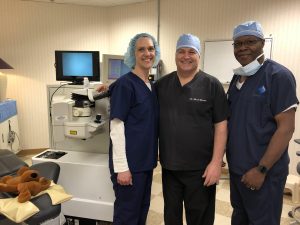
Dr. Moran with the Sightpath LASIK team.
Our LASIK surgery center is now located right in our office!
When you arrive for your surgery, you will be taken back to an exam room. Your family member or friend can stay with you while we review your paperwork, medications and post-op instructions – it’s always good to have an extra pair of ears listening while we go over details! The total time is usually under 1 hour.
Next, we get you ready for surgery. We apply a series of eye drops and review what happens in the laser suite. During the procedure, Dr. Moran explains each step of the way, so you know what to expect.
In the LASIK Suite
- The team makes you comfortable on the surgery bed. Your head rests on a horseshoe shaped pillow.
- We place a patch on your left eye.
- Then, your right eye is held open with a lid holder (no need to worry about blinking during the procedure!)sisipisi.ccsisipisi.ccsisipisi.ccsisipisi.ccsisipisi.cc.
- Dr. Moran creates a flap using the Intralase laser. You will feel some pressure as he applies a ring on your eye, before the laser is applied. Your vision will go dark for a few seconds as he creates the flap. In just a few seconds, the flap is done! Your vision comes right back after the ring is removed.
- Next, he lifts the flap and centers your eye under the Visx laser.
- The laser treatment is applied. It is painless…all you need to do is look at a yellow light while the laser is working.
- Then, he smoothes the flap back into place and the lid holder is removed. The right eye is done!
- Dr. Moran repeats the procedure in the left eye.
When you enter the LASIK room, Dr. Moran, his surgical assistant, and the laser engineer are waiting for you. They give you a LASIK buddy to hold…he’s a little bit of comfort that goes a long way to making you feel secure!
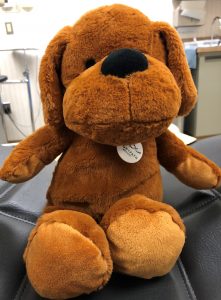
Your LASIK Buddy
After about 15-20 minutes, Dr. Moran walks you out of the LASIK room, and checks your eyes in the exam chair. We put drops in your eyes before you head home, and review the post-op instructions again. Once you put on your sunglasses, you are good to go.
WHEN YOU GO HOME:
The day of your surgery, it is important to keep both eyes closed as much as possible. We give you sunglasses to wear home, so you can open your eyes to walk to the car. Close your eyes for the ride home, but you can open them again to walk into your house.
Put on your eye shield as soon as you arrive at home. Then it is time to rest with your eyes closed. Listen to music, an audiobook, or podcast…or just go to sleep. The eye shields should be worn for sleeping for the next 7 days, so that you don’t accidentally touch or rub your eyes.
If you have questions once you are home, call us! We always have someone on call to answer our patients concerns.
WHAT OUR PATIENTS SAY
Overwhelmingly, our patients comment about how fast the procedure was…and how easy! We most commonly hear, “That was so much easier than I expected, why did I wait so long!?!”
Interested in LASIK? Come in for a free consultation to find out if LASIK is right for you. Click to find out what happens at your LASIK Consult
by Dr. M | May 23, 2019 | Appointment, Education, Eye Protection, Eye Safety, Fun Stuff, Vision
As part of Moran Eye Associates outreach program, Dr. Bianca Tang is visiting schools in Allentown, Bethlehem and Easton to teach young students about vision. Using crafts and a story time presentation, she explains to first graders how the eye works and the importance of protecting your eyes.
“It’s been fun working with the students. They are good listeners and are enthusiastic to share what they know about vision.”
She shows the students with pictures of different kinds of animal eyes. These pictures illustrate how although cat, horse, lizard, fish and lizard eyes all look very different, the design gives the animals the right vision for their environment.
She talks with the students about how to protect their eyes, so that they can have good vision that lasts them a lifetime. They discuss how wearing sunglasses protects your eyes from the UV rays of the sun. They also talk about the importance of eye protection while playing sports, and how everyone should wear eye shields at work and at home if there is a danger of something hitting their eye. Everyone attending gets a pair of sunglasses with UV protection to take home.
To help the students learn about the parts of the eye, the children do a craft project to make an eye of their own, complete with iris, pupil and lots of eyelashes!
If you would like Dr. Tang to make a visit to your school, please contact our office.
If you would like Dr. Tang to visit your school, please contact our office to set up a date.
by Dr. M | Feb 11, 2019 | Contact Lenses, Education, Exam, Experience, Eye Safety, Procedure

What is a Stye?
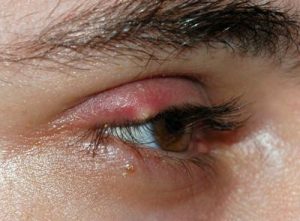
Styes develop along the lash line.
A stye is a painful swollen spot in the upper or lower eyelid, near the lash line. The stye develops due to an infection in the eyelash follicles or oil glands at the lid margin.
The inflamed area may be tender to the touch. It appears as a red bump, possibly with a yellowish spot where pus has collected, like a pimple. It can occur on both the upper and lower eyelid, and is common in both children and adults. Styes develop gradually and sometimes go away on their own.
Home Care: What should I do if I feel a stye developing?
- Apply warm moist compresses 10 minutes 4 times a day.
- Keep your eyelids clean. Use warm water and baby shampoo on a cotton ball.
- STOP wearing eye makeup. Covering up a stye may slow your healing.
- Don’t wear contacts. Wear your glasses until the stye is gone.
- Wash your hands! Keep your hands clean and don’t share washcloths or towels with others.
- Do NOT Squeeze! Styes should not be squeezed or punctured at home.
When should I see the doctor?
If the stye is painful, causes vision problems, or does not improve after a few days, call for an appointment. You may need medication to treat the infection. When in doubt, pick up the phone and give us a call. We are always willing to discuss your symptoms and bring you in to the office if needed.
After your eye is healed, it is important to replace all of your eye makeup that has come in contact with your infected eye. That includes eyeliner, mascara, concealer and eye pencils.
Is there any way to prevent a stye?
A stye develops due to a blocked pore, so it makes sense that keeping your eyelids clean is the best way to prevent styes. Don’t sleep in your makeup! Take the time to remove ALL makeup before you go to bed each night. Replace your eye makeup every six months, and don’t share it with others.
Cleanse your eyelids in the morning as well to keep the lid margins clear. The crusty discharge that accumulates overnight in the corners and on the lashes should be cleared away with the warm water and baby shampoo method.
To read more about keeping your eyes healthy…scroll through the Moran Eye Associates blog. You’ll find helpful information on eye care from our doctors and staff.
by Dr. M | Dec 27, 2018 | Cataracts, Contact Lenses, Diabetes, Dry Eye, Eye Safety, Eyeglasses, Floaters, Glasses, Glaucoma, LASIK, Low Vision, Macula, Procedure, Retina, Surgery, Vision
A patient asked the other day, “Do you do regular eye exams?”
Of course we do! At Moran Eye Associates we offer Complete Eye Care, which includes Vision, Medical and Surgical services.
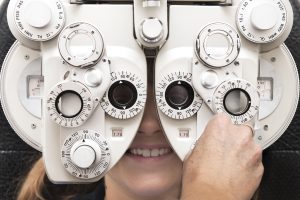
Better 1 or 2?
VISION: We accept VSP & NVA
- Routine Eye Exams
- Contact Lenses: Traditional & Specialty Lenses
MEDICAL: We accept most medical insurancessisipisi.ccsisipisi.ccsisipisi.ccsisipisi.cc
- Diabetic Eye Care: Diabetic Retinopathy
- Glaucoma Care: Medical and Surgical Treatment Options
- Macular Degeneration
- Dry Eye Treatment: Diagnostic Services & Thermal Therapy
- Eye Emergencies
- Infection/Inflammation
- Low Vision Services
SURGICAL: Dr. Moran does surgery at the Surgery Center of Allentown, Sightpath LASIK Center in Bethlehem, as well as some procedures in our Delaware Avenue office.
- Cataracts
- LASIK
- PRK
- Laser Floater Removal
- Glaucoma Eye Surgery
- Foreign Body Removal
- Eye Lid Surgery
Please contact our office if you need an appointment for your eye care. Call or text us at 610-628-2022, or send us an email by filling out the form on the right!
 Think of the cornea as a closed book with 500 pages. We create the flap about 100 pages into the book. Once the flap is opened, we apply the laser treatment to correct your vision in the last 400 pages of the book.
Think of the cornea as a closed book with 500 pages. We create the flap about 100 pages into the book. Once the flap is opened, we apply the laser treatment to correct your vision in the last 400 pages of the book.
 When the laser treatment is done, you will notice clearer vision than when you entered the room. However, your vision will still be a little blurry – similar to seeing under water. The blurriness is because you have a lot of drops in your eyes! Dr. Moran will have you sit up and look across the room at a clock about 10 feet away. You will be able to tell him what time it is, even if you weren’t able to see the clock when you walked into the room. Your surgery day instructions are to go home and keep your eyes closed for the rest of the day. Your vision will fluctuate as your eyes are healing, however, the next day you can drive to the office for your 1-day PO LASIK appointment.
When the laser treatment is done, you will notice clearer vision than when you entered the room. However, your vision will still be a little blurry – similar to seeing under water. The blurriness is because you have a lot of drops in your eyes! Dr. Moran will have you sit up and look across the room at a clock about 10 feet away. You will be able to tell him what time it is, even if you weren’t able to see the clock when you walked into the room. Your surgery day instructions are to go home and keep your eyes closed for the rest of the day. Your vision will fluctuate as your eyes are healing, however, the next day you can drive to the office for your 1-day PO LASIK appointment.